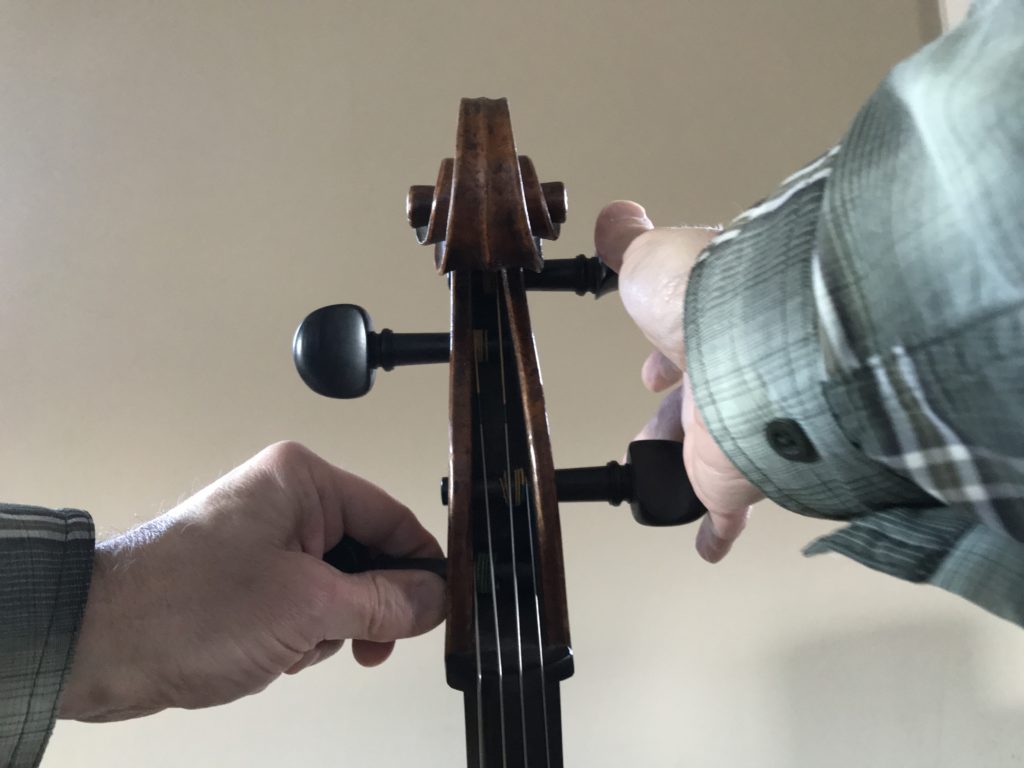Tune your cello every time before starting to play.
The overall process when using an electronic tuner or smartphone app is to tune the A (highest) string first. Then tune each adjacent string D, G, and C.
Raising the pitch of a string will tend to pull the top of the bridge closer to the fingerboard. This can affect the pitch of the other strings. So after tuning all four strings once, repeat the process until all of the strings are in tune.
Keep an eye on the angle of the bridge. It should be square to the top of the instrument. If the bridge becomes tilted toward the fingerboard, it should be straightened by a qualified repair shop (luthier). Otherwise the bridge can become warped. In extreme cases the bridge can fall or need replacement. Both require taking the cello to the shop.
Tune using the fine tuners
If a string is within a half step of the correct pitch, use the fine tuner to adjust the pitch. Fine tuners have normal screw threads. Turning them clockwise will raise the pitch while turning them counterclockwise will lower the pitch.
Strings go flat more often than they go sharp. Eventually a fine tuner may become screwed in all the way. If this happens, loosen the tuner about half way and retune the string with the peg. Never try to force a fine tuner with pliers! If you can’t turn a tuner either way, take the cello to the shop to be checked out.
Tune using the pegs
If a string is more than a half step out of tune, use the peg to tune the string within that range. Then finish with the fine tuner.
Keep in mind that friction holds the pegs in place. They’re tapered like a bottle stopper. So always keep some inward pressure on the peg as you turn it in either direction. Otherwise the peg can come completely loose. Then the string can go so far slack that it can detach from the tailpiece. Should that happen, your teacher can walk you through reinstalling the string over a video call. Or take the cello to the shop and they should be happy to help.
The pegbox has enough flex that pushing a peg in on one side will cause the ones on the opposite side to work loose. While turning a peg, brace the pegs on the other side against your open palm as shown in the photo below.

Start by loosening the peg enough for the string to go a bit below pitch. Then raise the pitch slowly while pressing the peg in so it holds well. If you go too high, go back below pitch. Repeat until the pitch is close enough to use the fine tuner.
Avoid tuning a string above the desired pitch. This can at best lessen the lifespan of the string or at worst cause the string to break.
Ideally the strings should be wound snugly against the walls of the pegbox. That helps keep them in place.
Follow these steps and you’ll become an expert cello tuner in no time!
